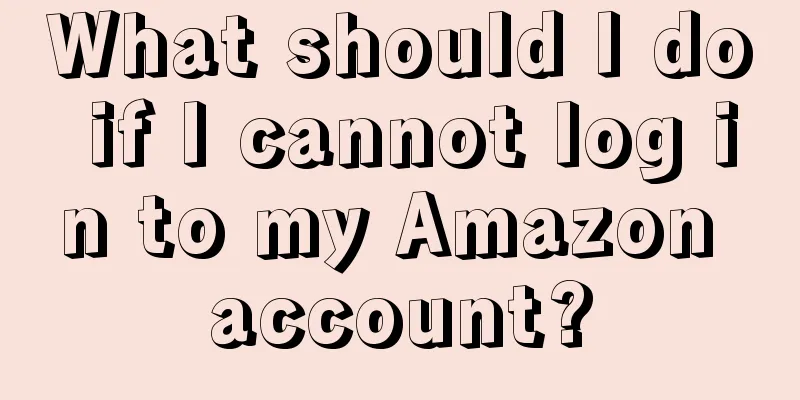The Japanese site has also come to Python! Trying to dominate multiple categories

|
Do you still remember that before Prime Day last month, a large number of products on Amazon were sold at ultra-low prices of one or two dollars, involving sellers of all sizes in multiple categories, and all shopping carts were snatched away in an instant? At that time, we analyzed two possibilities. One possibility was that they copied the competitor at a very low price, letting the system capture the low price and thus ruin the competitor's Prime Day event. Another possibility was that they took the order at a very low price, then did not ship the product and made a profit and ran away. The Japanese site, which recently shined during this year's Prime Day, was also exposed by sellers as having a big black hand maliciously attacking multiple categories, one of which was another means of attack: copying and selling at ultra-low prices. The attack routine of the Japanese python The routine of this python is very consistent. The attacked sellers will first receive one or two negative reviews and will be quickly pushed to the front page. Then comes the highlight. Use second-hand goods for 50 yen to sell at low prices to these sellers. The ranking of these products will rise rapidly, but the sellers will not get a single order... The seller’s editing rights to the shopping cart and listing will then be taken away. Then the evil hand will use a big move to add a large number of Amazon trademark words to the seller’s listing details page, causing the product to be directly removed from the shelves after being captured by the algorithm for infringement. Below are the infringement notices received by sellers. These are Amazon’s own products and trademarks, which can easily be caught by the algorithm for infringement. Even if the seller finally regains the editing rights and appeals, within two days Anaconda will repeat the same trick and remove the product from the shelves again. It will not stop until the seller gives up the product. According to revelations from sellers, this giant python has been causing trouble on the Japanese site since last year, with all kinds of malicious negative reviews and copycat sales methods emerging one after another, but Amazon officials have been slow to take any action. The purpose of this python is very clear. It is not to make a quick buck by copying and selling at a low price, but to kill off all other sellers in its category so that its products can completely dominate these categories. At present, netizens have dug out the company information and store brand name of the giant python. For the sake of security and authenticity, it will not be disclosed here. Sellers who are attacked can contact me privately at the end of the article. What should we do about the chaos of copycat sales? Follow-selling is one of Amazon's special features. There is no doubt that its original intention was good, but now it is being exploited by more and more people with ulterior motives, and the follow-selling function has long deviated from the original track. This follow-up attack is extremely bad and will not stop until the seller abandons the product. It is equivalent to using the knife of Amazon's algorithm to kill the listing, and it is difficult for the sellers to resist. The best way to deal with such things is to take precautions. It is easy to be helpless when the follow-selling really happens. As Amazon's official attitude towards follow-selling is unclear, we sellers need to participate in various anti-follow-selling plans and functions to maximize the difficulty of being followed, such as the exclusive plan, transparent plan, etc. Let me tell you about the recently popular transparent plan. All products participating in the Transparency Program will be distributed with unique anti-counterfeiting QR codes by Amazon (charged on a per-product basis). These QR codes are affixed to the products and serve as unique proof of identity for the products. In addition to customers being able to scan codes through the app to verify product authenticity and obtain product source and material information . When Amazon operates warehouses that accept Transparency Program products into the warehouse, they will also verify the QR codes of these products one by one. Products with incorrect or no QR codes will not be able to enter the warehouse. The Transparency Program also has its own tricks to prevent follow-selling. If you want to follow-sell a product that has participated in the Transparency Program, you need to enter at least 5 exclusive QR codes during the creation process before you can follow-sell, and these QR codes can only be obtained by the seller himself. This can prevent counterfeit products and stop giant companies like today from following and selling their own listings, without affecting their normal self-following sales strategy. It can be said to be a relatively perfect official anti-following sales plan at present. As for the cost, it is also very low. Currently, the transparent plan is free to join, and the QR code is charged per code. It is about 0.6 yuan per code, which is very cost-effective compared to the loss caused by copying. If you are not looking for extreme profits, the cost pressure of an extra 0.6 yuan per code is not great. It is recommended that sellers with a certain scale who need to worry about the problem of copycat sales consider it. It is regrettable that the Japanese site involved in this incident currently does not have a transparency plan. The sites that can use the transparency plan now include the United States, France, Germany, Italy, Spain, the United Kingdom, India and Canada. Except for the United States, other sites just joined the Transparency Plan last month, so sellers on the Japanese site can also look forward to Amazon's expansion work in the future. Sellers with needs can scan the QR code below to find me to get the registration channel~ PS. If you want to join the seller discussion group, you can also private message me to let me add you to the group Recently, I discussed with teacher Vivian to bring you a column of opinions on recent hot topics. The form of expression is a relatively relaxing video clip. If you like it, please remember to like it at the end~
Alice's little clone | Cross-border Business School For the highlights of the past, please click the link below to review The government has issued a ban! Amazon will be forced to cancel this feature Anaconda is back! This time, Amazon sellers join forces to defeat it! Will the store be dead if triggered? Amazon adopts a new review mechanism! Click to like and share your experience▼ |
<<: Rogue! The United States officially lists us as a "currency manipulator"!
>>: My destiny is in my own hands -- I relied on Amazon to achieve a comeback
Recommend
What are the Four Young Masters of South China City? Review of the Four Young Masters of South China City
The Four Young Masters of South China City refer t...
What is SellerActive? SellerActive Review
SellerActive's e-commerce tools help you manag...
Shein's first-half revenue hit a record high and it is actively recruiting Amazon sellers
Ever since Temu chose the North American market as...
What is Amazon Market Capacity? Amazon Market Capacity Evaluation
Market capacity refers to the stage sales volume o...
Insights into the U.S. pet product consumer demographic: pet ownership rates among young people are rising
It is learned that according to the latest "2...
What is RFP (Request For Proposal)? RFP (Request For Proposal) Evaluation
RFP (Request For Proposal) is a comprehensive and ...
How to handle Amazon returns with minimal losses?
Returns, the nightmare of Amazon sellers. In addi...
What is Bizrate.com? Bizrate.com Review
BizRate is a well-known American comparison shoppi...
What is Sellbrite? Sellbrite Review
Sellbrite is the leading multi-channel inventory a...
Amazon added 800,000 new sellers last year! Price war is really unstoppable!
In Amazon's business landscape, every strategi...
A hot-selling product with a sales volume of 2.27 million units was sold out, and it once dominated the Amazon Best Seller list.
It is learned that according to recent foreign med...
What is M6go? M6go Review
M6go is a global trading company. Through cooperat...
Sellers must read: New technology that completely subverts Amazon reviews
Amazon fake order review found a subversive bug , ...
Amazon’s new product promotion process, just read this article!
text 1. Product Details 1. Before listing, perfec...
Big event of the week! A positive review costs 117 yuan, Amazon issues a severe warning against fake orders!
Amazon Live to be launched on the entire site Dec...









